CASE STUDY
❮ ALL CASE STUDIESCircular Yoga Studio Heated Comforatbly all Winter
Description: Off-site constructed ‘Round House’ with direct electric skirting heating
Client: Rotunda Ltd
ThermaSkirt Profile: Deco BMe2
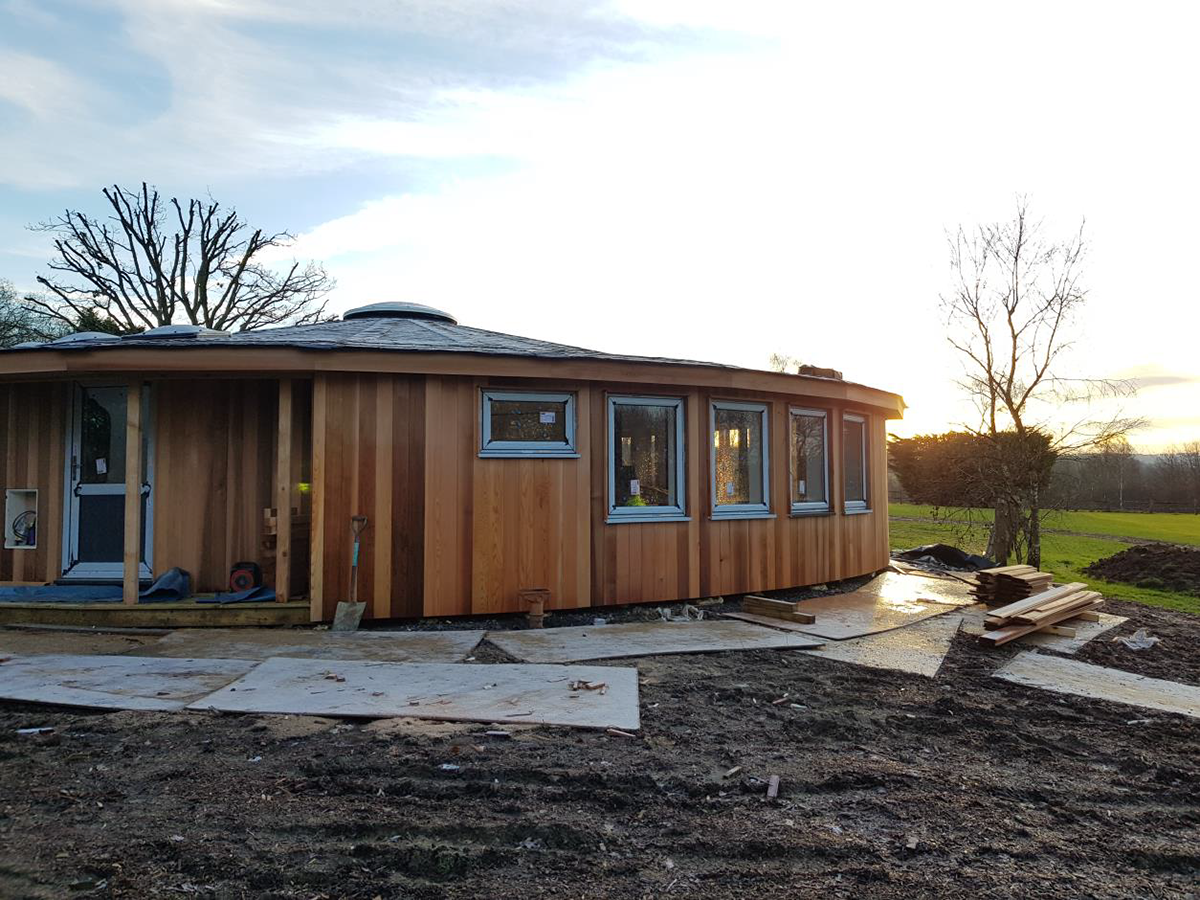
Rotunda Round House are not only often ‘off-gas’ but have circular walls as well

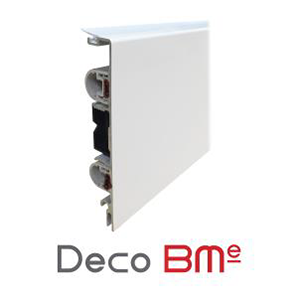
The Challenge
Off-site or modular construction whilst offering several advantages over traditional construction such as repeatability and all-weather working, does sometimes throw up its’ own challenges and hurdles. None more so than Rotunda, that specialises in the construction of Round Houses and living/working spaces.
Being a circular, open plan unit, Rotunda round houses like to make the best use of light and space and as such have vaulted ceilings and an abundance of windows with low ledges. As well as residential, Rotunda units can be designed as educational spaces, exercise and therapy or light and airy offices. With curved walls and low windows, the issue of heating the spaces created became bit of a problem.
Joanna Hayes, Project Manager at Rotunda explained further;
“We absolutely didn’t want panel type radiators as they would spoil the clean, curved lines the rooms create and look out of place in a
contemporary structure. We automatically thought of electric underfloor heating, but as this has to
be installed under our wooden floor structure, it just wouldn’t deliver the heat required.
In addition, as the units are transported in sections and assembled on site, the UFH matting couldn’t bridge
across sections and so several separate systems would be needed”
The Solution
After Googling ‘underfloor heating alternative’, Joanne discovered that there was an ‘above ground’ electric heating systems disguised as a skirting board.
Manufactured in the UK by DiscreteHeat Ltd, ThermaSkirt is a radiant heating system that is designed to replicate a skirting board profile. Made from aluminum, the skirting profile is heated by a special heating cable secured to the back face. The front face then heats up and radiates heat from a low level all around the room. Alternatively, the Skirting can also be heated by a warm water like a traditional radiator, flowing through integral water pipes on the rear.
Joanne continues
“I was amazed to see that not only could we fit a skirting board that would also heat the module, but it was capable of being curved to the shape of the walls”
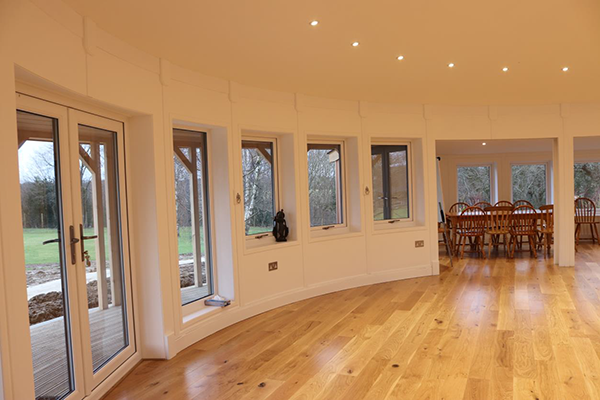
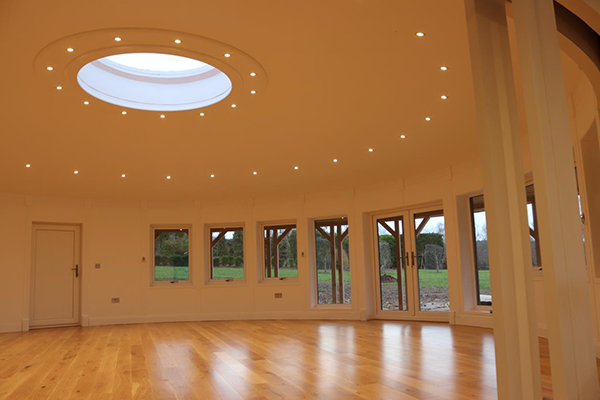
The Result
DiscreteHeat were able to design and supply a complete heating system for the 18meter Ø module, that could easily be connected to the traditional electric heater points via a switched fuse spur.
The room temperature is controlled by a smart touchscreen thermostat that can be programmed for 7 day/24 hour operation with up to 6 timings per day and an accuracy of ½ degree C. The ThermaSkirt profile has a diminutive 20mm section, making it extremely slim and very discreet as a skirting board.
The top edge is designed with a built-in seal, to prevent the ingress of fluids or detritus, and to take up any imperfections in the wall. Being ‘above ground’ ThermaSkirt works with any floor construction or finish; tile, laminate, carpet or wood and of course can often use the existing radiator pipeworks or storage radiator electrics
Joanne goes on
“We are delighted with the overall finished look of the ThermaSkirt – it blends in
well and was simple to curve to the shape of the room.
Just as importantly it warms the room
quickly and evenly from cold – something our client was very keen on, as this particular unit is used
as a yoga therapy room.
As such, it’s not heated all day, so it was important it could get up to
temperature and off again quickly, to avoid under heatiing or over heating and wasting energy”.
Running costs should be lower than with a conventional electric panel heater as the even distribution of heat creates a more comfortable environment with no cold and hots spots or drafts.
Just as importantly, the ThermaSkirt e electric heating system is the only one of its kind that will not overheat even if accidentally covered over by a blanket or duvet etc. This can be vital in not only preventing fires, but also repairs and renewals of failed heaters.
Rotunda have now standardised on the ThermaSkirt e electric skirting heating system for all future Roundhouses.
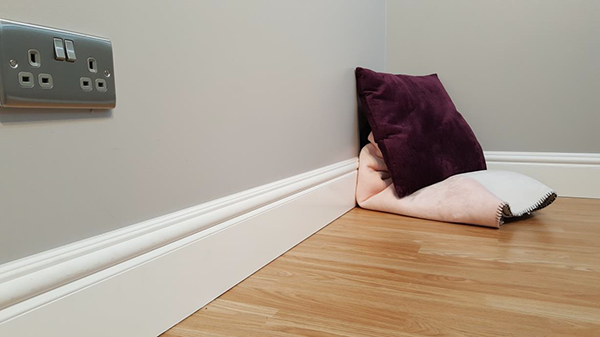
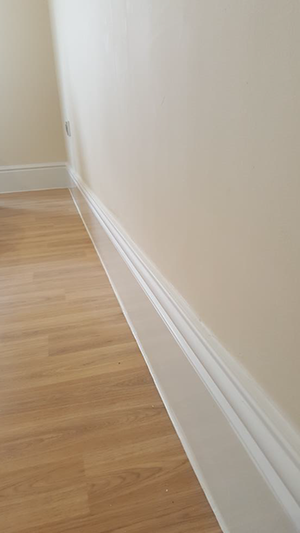
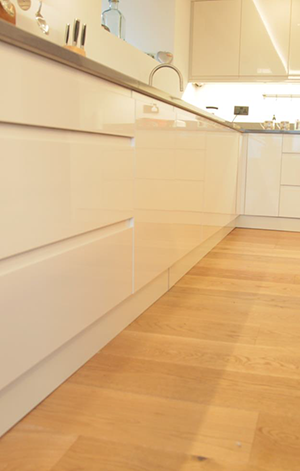
ThermaSkirt Works just as well with any floor finish; Kitchen plinth versions are available to heat even the smallest kitchen

